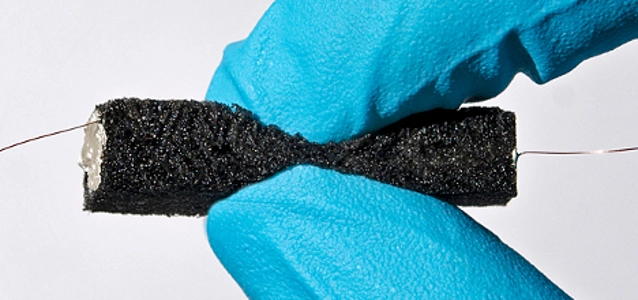
© kth
Components |
Trees are a source for high-capacity, soft batteries
A method for making elastic high-capacity batteries from wood pulp was unveiled by researchers in Sweden and the US.
Using nanocellulose broken down from tree fibres, a team from KTH Royal Institute of Technology and Stanford University produced an elastic, foam-like battery material that can withstand shock and stress.
"There are limits to how thin a battery can be, but that becomes less relevant in 3D, " says Max Hamedi, who is a researcher at KTH and Harvard University. "We are no longer restricted to two dimensions. We can build in three dimensions, enabling us to fit more electronics in a smaller space."
A 3D structure enables storage of significantly more power in less space than is possible with conventional batteries, he says.
The process for creating the material begins with breaking down tree fibres, making them roughly one million times thinner. The nanocellulose is dissolved, frozen and then freeze-dried so that the moisture evaporates without passing through a liquid state.
The finished aerogel can then be treated with electronic properties. "We use a very precise technique, verging on the atomic level, which adds ink that conducts electricity within the aerogel. You can coat the entire surface within."
In terms of surface area, Hamedi compares the material to a pair of human lungs, which if unfurled could be spread over a football field. Similarly, a single cubic decimeter of the battery material would cover most of a football pitch, he says.
"You can press it as much as you want. While flexible and stretchable electronics already exist, the insensitivity to shock and impact are somewhat new."
Hamedi says the aerogel batteries could be used in electric car bodies, as well as in clothing, providing the garment has a lining.
